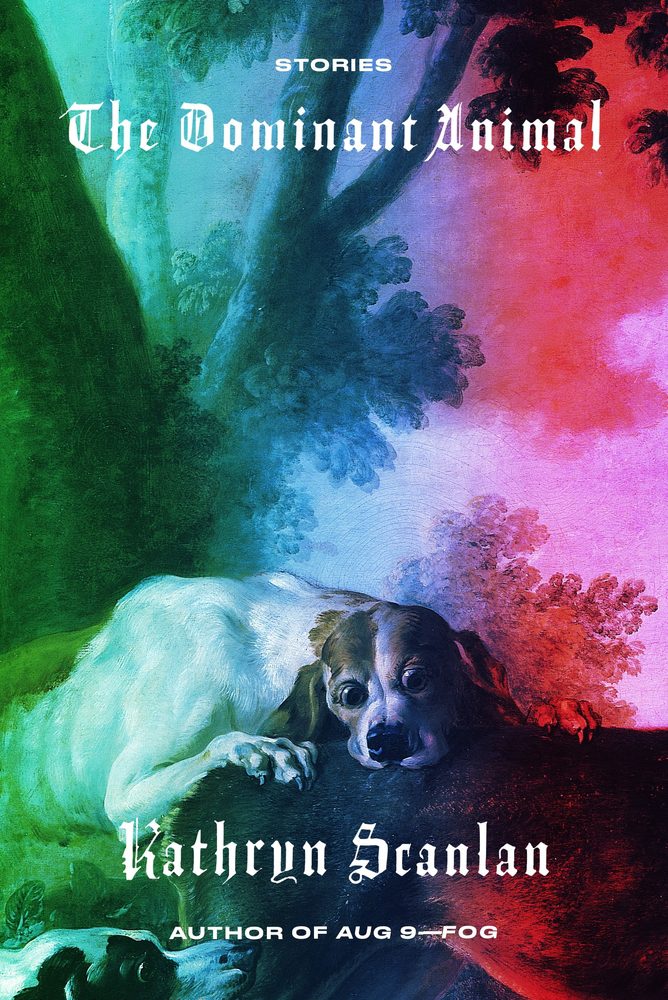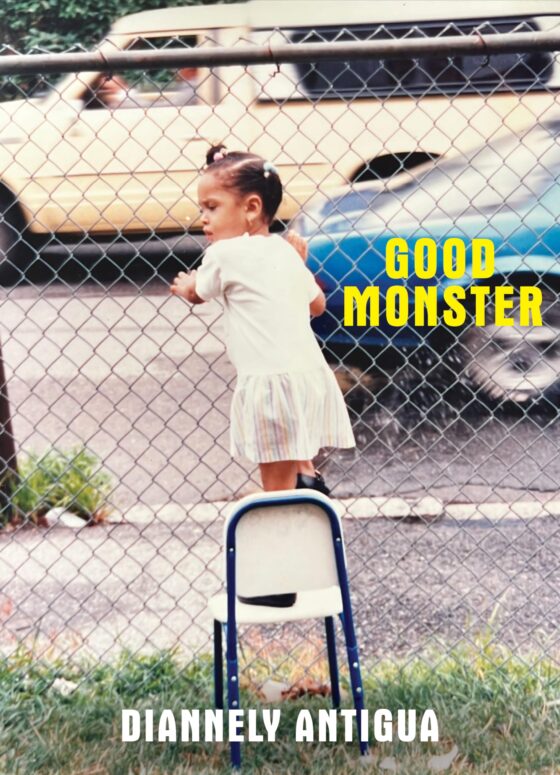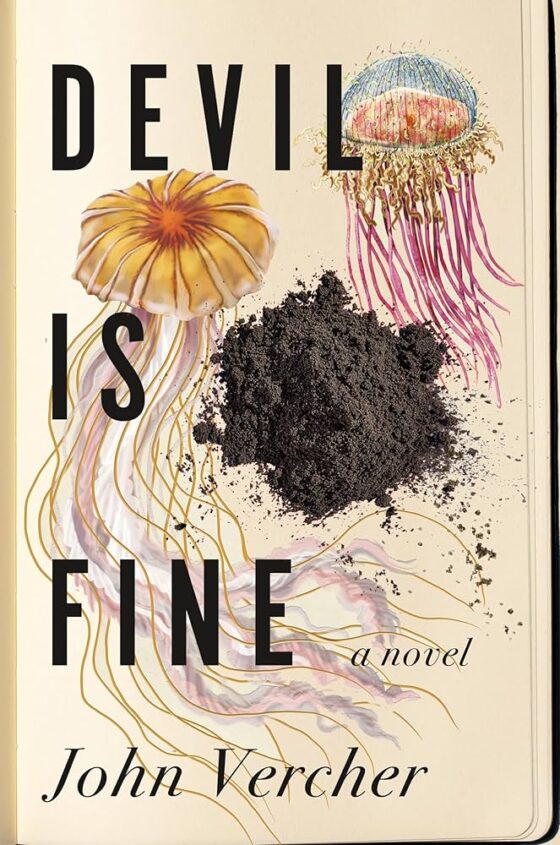
I first met Kathryn Scanlan at a reading last year for Karen Olsson’s new book—the two writers share an editor in common. In chatting briefly with Scanlan, it came up that I was writing an essay on M.F.K Fisher’s How to Cook a Wolf, a book about cooking during wartime. It is one of Fisher’s weirder and more dated books, and I was surprised that Kathryn was as into it as I.
Then I read her new collection, The Dominant Animal. In this series of stories, no matter how big and gluttonous the buffet, nor how much wild game is stockpiled in the freezer, somehow the “wolf” is always scratching at the door. Hunger in her book rarely has to do with scarcity, but with exerting one’s own appetites, exerting power. Her stories cook wolves literally and figuratively, with dread and with relish.
Scanlan’s stories have appeared in NOON, Fence, American Short Fiction, Tin House, Caketrain, and The Iowa Review, among other publications. Her first book, the novel Aug 9 – Fog, came out last year, and The Dominant Animal is her debut collection of short stories, just released in April from Farrar, Straus and Giroux.
Kathryn Scanlan and I spoke recently about her new collection, power dynamics in relationships and fiction, the importance of paying attention, and using found objects to initiate stories.
***
The Rumpus: Your story “The Hungry Valley” seems a good place to start. You go through the food chain, describing a spectrum from the anodyne (fish eats worm from hook) to the grotesque (dog eats testes of horse, freshly gelded). In fact, almost all of your stories are inhabited by animals in some sense, whether they are nibbling the motor of a luxury car or hung out at the butcher shop. Why are these ambient animals, these hungry presences, so important in your work?
Kathryn Scanlan: The attitude toward, the treatment of animals by humans—who are, of course, also animals—is something I am always thinking about. Even your example of “the food chain” in “The Hungry Valley”—the notion that it’s more acceptable to skewer a worm onto a hook than it is for a dog to eat offal —is interesting to consider. Obviously the offal comes courtesy of human barbarism in this instance, which makes it more grotesque, but it’s also barbarous to skewer a worm. I fished a lot with my father as a child and he always had to put the worm on the hook for me—I could never bear to do it, though my favorite meal at the time was veal. Eating becomes a useful way to look at this because every being must eat and eating always means destruction—often of another being. Every day we are faced with the casual, naturalized violence of lunch. Dominance and violence are recurring topics in the collection and eating is inextricably linked with these.
Most of the stories come from a deep discomfort with the power structures built, it seems, into every relationship—whether between men and women, parents and children, or humans and animals.
Rumpus: One thing I notice about your stories is that revenge feelings are common, but exacting revenge is not. Women snap chicken bones imagining the destruction of an abuser, they collect large inheritances to get back at their parents, they watch golf balls rain from the sky upon a cranky husband. What attracts you to these revenge proxies?
Scanlan: My response to seeing others abused, to feeling myself abused, is typically anger—which I try to convert to creative energy. Fiction is a way for me to imagine justice and retribution for those who deserve it, to rewrite old narratives, to have fun doing so—to play the part of a mischievous, vengeful god.
Rumpus: I see the influence of a lot of writers like Lydia Davis, Diane Williams, and Christine Schutt in your work. But I also wonder about your relationship with contemporary art. While you have those finely calibrated sentences and surprises, there is also something about the content that makes me think of an artist like Mike Kelley, who used dirty domesticity to talk about the world. What are your inspirations in the world of literature and visual art?
Scanlan: Mike Kelley was a genius, as are the writers you mention, and all have been important to me. Visual art is always in my mind alongside writing.
There are too many to list here but I’m challenged and inspired by the work of, among others: David Hammons, Moyra Davey, Sarah Lucas, Mary Ruefle, Claudia Rankine, Thomas Bernhard, Gary Lutz, Vi Khi Nao, Anne Carson, Samuel Beckett, Grace Paley, Theresa Hak Kyung Cha, Fleur Jaeggy, Jimmie Durham, Agnes Martin, Zoe Leonard, Kerry James Marshall, Helen Frankenthaler, Mary Heilmann, Henry Taylor, Taeko Kono…
Rumpus: The Dominant Animal is a huge departure from your first book, Aug 9 – Fog, whose source text was the found journal of an elderly Midwestern woman. The books are equally fine-tuned and poetic, but Aug 9 is very serene verbally, visually, emotionally. There is a warmth in its plainness and in the direct reporting on close friends and family. The observations that your narrator makes in that book are aggressively un-weird and unadorned. How do you account for this chasm in the mood of these books?
Scanlan: I think that when you’re paying attention, much of what happens in life is strange—it’s not something I’m necessarily privileging or seeking out. I’m interested in what compels me, and I’m compelled by a lot of different things, including the voice of the diarist in Aug 9 – Fog.
It’s true the language of the stories is more aggressive, more worked, and the mood is certainly different, but I think the books share a preoccupation with daily struggle and survival and the attainment or non-attainment of serenity—this is also probably why I love How to Cook a Wolf. Close observation of small details, of dailiness, builds to create a picture of life that is less concerned with narrative in a traditional, fully fleshed sense and more with narrative as it’s built by negative space, by what isn’t there.
Rumpus: I imagine the universe of The Dominant Animal as something like an estate sale where you’d find a discarded journal. You have your antiques and your home medical equipment and a box of unused flypaper and the contents of the liquor cabinet all mixed up together, the whole jumble of life up for grabs. Were any of the stories in The Dominant Animal inspired by thrifted objects or found texts?
Scanlan: Yes, certainly—“The Locket” was inspired by several antique lockets I own and “Victorian Wedding Portrait” is a reworking of a nineteenth-century text I came across in someone else’s library. “Dear Sirs” started with an email I received at work. The Swedish model’s diet book in “Live a Little” is lifted from a similar book I found on my grandmother’s bookshelf. “Dear Mary” came from reading letters and diaries of nineteenth-century settlers and immigrants.
Rumpus: I want to come back to the animals we spoke about at the beginning. This book is filled with many different kinds of dogs! I’m curious about your relation to dogs, the place they hold in your mind and house.
Scanlan: My dog came into my life in 2003 and left it in 2018. I’m writing the response to this on what would’ve been her seventeenth birthday. When she arrived, I was beginning to write in a more committed way, and she helped me do that—it was easier to stay home because she was there. She was my coworker. The book is dedicated to her and the title comes from the story “The Dominant Animal,” the earliest draft of which began as a way for me to sort through the knotted feelings I had (have) about humans keeping dogs as pets. My dog was small, and I loved to pick her up, but I got the sense she didn’t always love to be picked up, and I would often think about things like that—how, usually, my wishes, my will would prevail simply because I was bigger than she was, and how uncomfortable I was about that, how monstrous I sometimes felt.
We keep these creatures, they’re dependent on us for their survival—we’ve made them dependent—we’ve shaped them to suit our emotional needs, we often treat them as though they’re human or humanlike and ignore their unique needs as dogs. There are few things I get more delight from than watching and interacting with animals, dogs in particular, but I find the human-dog relationship to be fraught—and of continual interest.
Rumpus: I notice that your stories are grouped in fives. Are they meant to be read as cycles, or how did you choose to organize them this way? I also have to know about the strange headpieces that separate these sections—they look like two boat bottoms made into a ladle. What’s the story there?
Scanlan: When my editor and I were working on ordering the stories, she initially sent them to me in small groupings she’d made based on formal similarities or repeated themes. I used her model to create my own groups, then decided I liked breaking them apart this way. There are forty stories in the collection, and though they are short, punctuating them with a recurring pause or rest seemed useful. I began to think of it as a rest in a musical sense, and sent images of rest symbols from sheet music as well as some of the eccentric flourishes often found in NOON to Na Kim, who designed the (brilliant) covers for both of my books. She drew the blackletter font for The Dominant Animal by hand and she drew up about a dozen strange and wonderful symbols, but this one felt most accurate to the book.
Rumpus: Each story and each sentence is written with beautiful economy. I wonder about the messiest stages of your process. Do you write something longer or sloppier to begin with and then whittle it down? What does your note-taking look like?
Scanlan: Every once in a while I’ll give myself permission to write a slightly longer, sloppier draft of a story —and lately I’ve been working on essays that seem to require an initial mess in order to proceed—but most of the time I’m line editing as I’m composing, and the work I do in an individual sentence typically determines what happens in the next one, and I’m unable to continue if what comes before is unsatisfactory. This sentence-by-sentence method can occasionally be stifling, constricting—and when it is, I’ll turn to the other stories I’m working on to check whether I might borrow something from one to invigorate the other, or I return to my notebooks, where I keep overheard dialogue, pleasing turns of phrase, passages from books, et cetera. My notebooks are where the mess is—I’ll often begin writing a story out by hand there, and if it feels like it’s going somewhere, I’ll open a new document on the computer.
Rumpus: In “Fable,” after a butcher kills his wife and befriends her deadbeat father, the narrator says “Handled properly, a good stone would jig happily, prettily across the surface till exhausted. As the men understood it, the trick was to hold the thing lightly—tenderly—and then, with a swift jerk, send it spinning.” That line also strikes me as a beautiful description of the way your stories are plotted, if that term even applies. Once you have begun your stories, what sort of mindset do you need to be in to set characters “spinning”?
Scanlan: “Fable” is unique because that story came to me complete, from start to finish, in a dream—I woke up and wrote it down—but most of the time when I begin a story I don’t know where it will end up. I work slowly, from sentence to sentence, and attempt to stay attuned to opportunity.
In multiple interviews, Diane Williams talks about the story “Pornography” from her first collection—about her initial surprise and horror at having written it, about how she’d arrived at the ending, about whether it made her a bad person to put something like that out into the world. I think about this a lot when I write because I often have similar experiences with my stories, but it is also what is most compelling to me about writing—that something unexpected might suddenly rise from the unconscious, something I wouldn’t otherwise have access to. These submerged ideas are often dark, amoral, but because I don’t think art should make us feel comfortable, they’re of great value to me.
***
Photograph of Kathryn Scanlan by Melanie Schiff.





